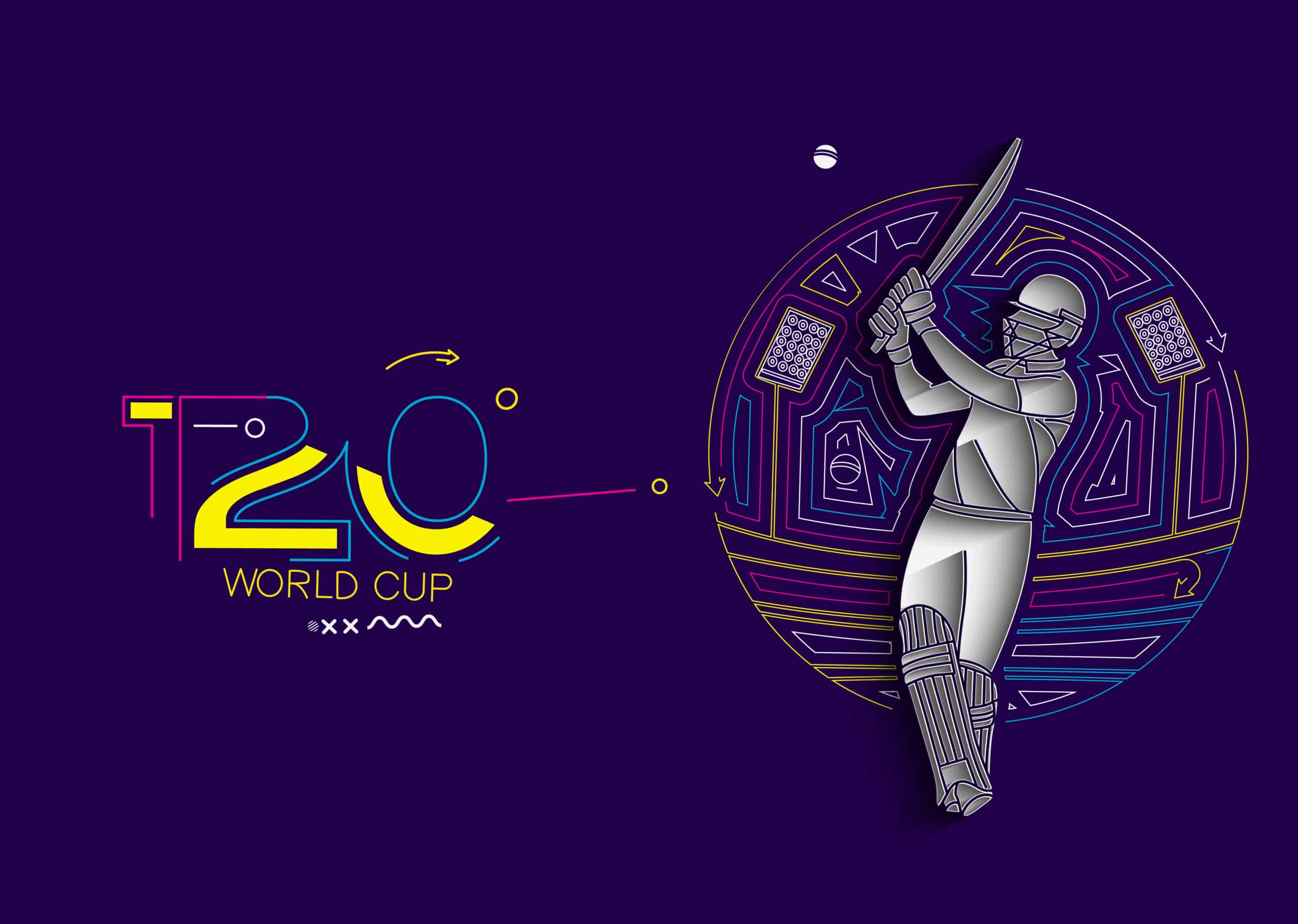Cricket fans, mark your calendars! The T20 World Cup 2026 is shaping up to be one of the most anticipated tournaments in cricket history. After the spectacular success of recent editions, the International Cricket Council (ICC) is pulling out all the stops to make this edition even more memorable.
If you’re wondering what’s in store, where it’s happening, and why this tournament matters more than ever, you’re in the right place. Let’s dive deep into everything we know about the T20 World Cup 2026.
A Historic Partnership: India and Sri Lanka Co-Host
For the first time in T20 World Cup history, India and Sri Lanka will co-host the ninth edition of this marquee event. This partnership brings together two cricket-crazy nations with rich cricketing heritage and passionate fan bases that can turn any stadium into a cauldron of excitement.
India, having successfully hosted the ODI World Cup in 2023, has proven its ability to organize world-class cricket events. The infrastructure, from state-of-the-art stadiums to world-class hotels and transportation networks, is already in place. Sri Lanka, despite economic challenges in recent years, has shown tremendous resilience and maintains its reputation as a cricket powerhouse with venues that offer unique character and atmosphere.
The tournament is scheduled to take place in February-March 2026, perfectly timed to avoid monsoon seasons and provide ideal playing conditions. This timing also means we’re looking at potentially electrifying day-night matches under lights, where dew could play a fascinating tactical role.
Format and Structure: More Teams, More Drama
The ICC has confirmed that the T20 World Cup 2026 will feature 20 teams competing across multiple venues. This expansion from previous editions means more Associate nations get their moment on the global stage—a crucial development for cricket’s growth in non-traditional markets.
The tournament format will likely follow a group stage followed by a Super 8 or Super 12 phase, leading to semi-finals and the grand finale. This structure has worked brilliantly in recent editions, ensuring that almost every match carries significant weight while giving teams multiple opportunities to showcase their skills.
What makes this format particularly exciting is the potential for upside stories. Remember when Ireland stunned England in the 2011 World Cup? Or when Afghanistan defeated cricket giants in recent tournaments? The expanded format increases the chances of such memorable moments that remind us why we fell in love with cricket in the first place.

Venues: A Cricket Lover’s Dream Tour
While the ICC hasn’t released the complete list of venues yet, we can expect matches across some of cricket’s most iconic stadiums:
In India:
- Wankhede Stadium, Mumbai: The venue where MS Dhoni hit that legendary six to win the 2011 World Cup
- Eden Gardens, Kolkata: One of the world’s largest cricket stadiums with an electric atmosphere
- M. Chinnaswamy Stadium, Bangalore: Known for high-scoring thrillers and enthusiastic crowds
- Narendra Modi Stadium, Ahmedabad: The world’s largest cricket stadium with a capacity of over 132,000
In Sri Lanka:
- R. Premadasa Stadium, Colombo: A fortress for Sri Lankan cricket with a rich history
- Pallekele International Cricket Stadium, Kandy: Nestled in the hills, offering stunning views and balanced conditions
Each venue brings its own character. The sub-continental pitches typically favor spin bowling, but modern white-ball cricket has evolved to such an extent that teams need to be prepared for anything—sharp turn, reverse swing, or flat batting tracks where 200 isn’t always enough.
Why This Tournament Matters More Than Ever
The T20 World Cup 2026 comes at a pivotal moment for cricket. The format has completely revolutionized how the game is played, watched, and monetized. Here’s why this edition carries extra significance:
The Battle for Supremacy
Since the inaugural T20 World Cup in 2007, we’ve seen six different champions. The West Indies have won it twice (2012, 2016), while India, Pakistan, England, Sri Lanka, and Australia have each claimed the trophy once. This level of unpredictability makes T20 cricket beautifully democratic—on any given day, any team can beat any other.
The 2026 edition will be fiercely contested. India, playing at home, will have the advantage of familiar conditions and roaring crowds. But we’ve seen time and again that home advantage can be a double-edged sword. The pressure of expectations can be crushing, especially in a format where one bad over can change the entire complexion of a match.
Evolution of the Game
T20 cricket in 2026 will look significantly different from even the 2024 edition. The game evolves at breakneck speed. Batters are now targeting overs 7-15, traditionally considered consolidation phases. Bowlers are developing new variations—slower ball bouncers, wide yorkers, and knuckle balls that would have seemed gimmicky a decade ago but are now essential weapons.
The rise of franchise leagues worldwide—IPL, Big Bash, CPL, The Hundred—means players are exposed to different conditions and pressure situations more than ever before. This experience translates directly to international T20 cricket, raising the overall quality and competitiveness.
Economic Impact
Hosting a T20 World Cup isn’t just about cricket—it’s a massive economic event. The 2023 ODI World Cup in India generated billions in revenue and attracted hundreds of thousands of international visitors. Tourism, hospitality, media rights, sponsorships, and merchandise sales create a ripple effect throughout the economy.
For Sri Lanka, recovering from economic difficulties, the T20 World Cup represents an opportunity to showcase its resilience and attract international attention. Cricket tourism could provide a significant boost to the country’s service sector.
Teams to Watch
While it’s still early and team compositions will evolve, several nations are already positioning themselves as serious contenders:
India
Playing at home with arguably the deepest talent pool in world cricket, India will enter as one of the favorites. Their batting lineup typically features multiple match-winners, and they’ve developed a potent pace attack to complement their traditional spin strength. However, India’s ICC trophy drought in white-ball cricket (since 2013) creates immense pressure.
England
The 2022 champions play a brand of aggressive cricket that’s tailor-made for T20 success. They’ve shown they can win in diverse conditions and handle pressure. Their fearless approach—batting first and posting 200+ scores, aggressive field placements, and backing youngsters—has changed how teams approach the format.
Australia
Never write off the Australians in a World Cup. Their professional approach, ability to peak at the right time, and depth in all-rounders make them perpetual threats. They’ll arrive battle-hardened from the Big Bash League and looking to add another T20 title to their bulging trophy cabinet.
Pakistan
Cricket’s most unpredictable team can beat anyone on their day. Their fast bowling traditionally suits sub-continental evening conditions, and they possess explosive batters who can change games in a matter of overs. The question, as always, is consistency.
West Indies
The twice champions have been rebuilding. Their Caribbean flair and power-hitting remain unmatched on their day. If they can find the right balance and consistency, their explosive potential makes them dangerous opponents for anyone.
The Impact of Technology and Analytics
Modern T20 cricket is as much a game of data as it is of skill. Teams now employ full-time analysts who break down opposition tendencies, optimal batting orders for different scenarios, and bowling match-ups that maximize success probability.
Hawk-Eye, UltraEdge, and other broadcast technologies ensure decision accuracy, while Strategic Timeout allows teams to recalibrate mid-innings. The Decision Review System (DRS) has become an integral part of game management—teams that use their reviews wisely often gain crucial advantages.
Players prepare differently too. They analyze their own performances across hundreds of parameters—strike rates against different types of bowling, boundary percentages, dot ball percentages, and much more. This preparation helps them make better real-time decisions under pressure.
Qualification Process: The Road to 2026
Not all 20 spots have been finalized yet. The qualification process involves regional tournaments where Associate nations battle for their place at cricket’s top table. These qualifiers often produce incredible drama—careers are made, dreams are realized, and heartbreak is experienced.
For countries like the Netherlands, Scotland, United Arab Emirates, and others, qualifying for a World Cup represents years of hard work and development. These teams bring fresh energy and occasionally spring major upsets that remind everyone that cricket is genuinely becoming a global sport.
What About the Fans?
Let’s be honest—a cricket tournament in India and Sri Lanka is about more than just what happens on the field. It’s about the atmosphere, the passion, and the sheer love for the game that you feel walking into these stadiums.
Indian cricket fans are famous for their enthusiasm. Whether it’s painting their faces in tricolor, creating massive banners, or turning up in thousands wearing replica jerseys, they create an atmosphere that’s unmatched in world cricket. Sri Lankan fans, equally passionate, bring their unique flavor with traditional drumming and celebrations.
For international visitors, attending matches offers a chance to experience South Asian culture, food, and hospitality. Imagine watching a thrilling T20 match at Wankhede, then exploring Mumbai’s street food scene. Or catching a game in Colombo before heading to Sri Lanka’s stunning beaches. It’s a cricket festival and cultural experience rolled into one.
Broadcast and Digital Innovation
The T20 World Cup 2026 will push broadcasting boundaries. Expect innovative camera angles, augmented reality graphics, and interactive viewing experiences. Streaming platforms are revolutionizing how younger audiences consume cricket, with features like multiple camera angles, player-focused streams, and real-time statistics.
Social media integration means moments of brilliance are shared globally within seconds. A stunning catch, a match-winning six, or a perfect yorker becomes instant content that reaches millions. This digital engagement expands cricket’s reach far beyond traditional television audiences.
Challenges and Considerations
No major tournament comes without challenges. Weather could play a factor, particularly if tropical storms affect scheduling. Security is always a concern for major events, requiring coordinated efforts between host nations and international agencies.
The compressed schedule means player workload management becomes crucial. With franchise leagues, bilateral series, and the World Cup itself, cricketers are playing year-round. Managing fatigue while maintaining performance levels is an ongoing challenge for teams.
Frequently Asked Questions
When exactly will the T20 World Cup 2026 take place?
The tournament is scheduled for February-March 2026, though exact dates haven’t been officially announced by the ICC yet. This timing avoids monsoon seasons and provides optimal playing conditions.
How many teams will participate?
Twenty teams will compete in the T20 World Cup 2026, making it one of the most inclusive editions of the tournament. This includes all major cricket-playing nations plus several Associate member teams who qualify through regional tournaments.
Which venues will host matches?
While the complete venue list hasn’t been officially confirmed, expect matches across major stadiums in India and Sri Lanka, including iconic grounds in Mumbai, Kolkata, Bangalore, Ahmedabad, Colombo, and Kandy.
How can I buy tickets?
Ticket sales typically begin several months before the tournament. They’ll be available through official ICC channels and authorized ticketing partners. Keep an eye on the official ICC website for announcements.
Will there be day-night matches?
Yes, expect a mix of afternoon and evening matches. Day-night fixtures under lights are particularly popular in T20 cricket, creating spectacular viewing experiences.
Which team is the defending champion?
England won the T20 World Cup in 2022, defeating Pakistan in the final at the Melbourne Cricket Ground. They’ll be defending their title in 2026.
The Road Ahead: Building Anticipation
As we count down to February-March 2026, the excitement will only build. Players will be fine-tuning their skills in various T20 leagues worldwide. Teams will be experimenting with combinations and strategies. Fans will be planning their trips and dreaming of their team lifting the trophy.
The T20 World Cup represents everything we love about modern cricket—explosive batting, clever bowling, athletic fielding, and the constant possibility of the unexpected. It’s cricket condensed into its most thrilling form, where reputations are forged and legends are born in the space of a few overs.
Whether you’re a die-hard cricket fanatic who knows the name of every player in every squad, or someone who just enjoys the excitement of big sporting events, the T20 World Cup 2026 promises to deliver unforgettable moments. The combination of two passionate host nations, expanded participation, world-class venues, and the format’s inherent unpredictability creates the perfect recipe for cricketing drama.
Final Thoughts
The T20 World Cup 2026 isn’t just another tournament—it’s a celebration of how far cricket has come and where it’s heading. From humble beginnings in 2007, when people questioned whether the format had staying power, T20 cricket has become the engine driving the sport’s global growth.
For India and Sri Lanka, hosting represents an opportunity to showcase not just their cricketing infrastructure but their cultures, hospitality, and passion for the game. For players, it’s a chance to etch their names in history. For fans, it’s an opportunity to be part of something special—a festival that brings together people from different backgrounds, united by their love for cricket.
The countdown has begun. The T20 World Cup 2026 is coming, and if history is any guide, we’re in for one spectacular ride. Whether your team wins or loses, whether your predictions come true or fall flat, one thing is certain—we’ll witness cricket at its most entertaining, unpredictable, and thrilling best.
So get ready to clear your schedules, gather your friends and family, and prepare for six weeks of non-stop cricketing action. The T20 World Cup 2026 is going to be epic!




